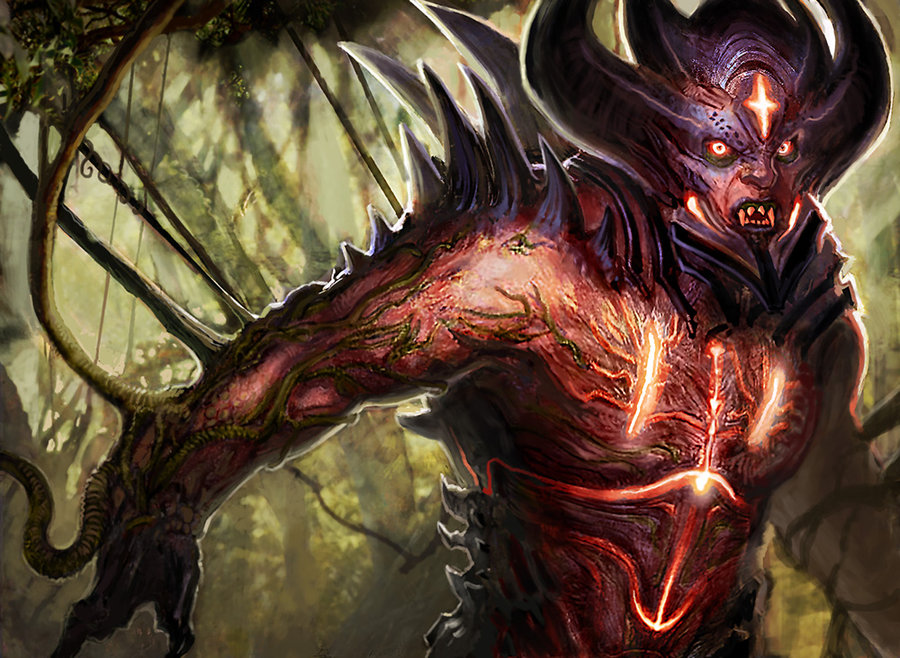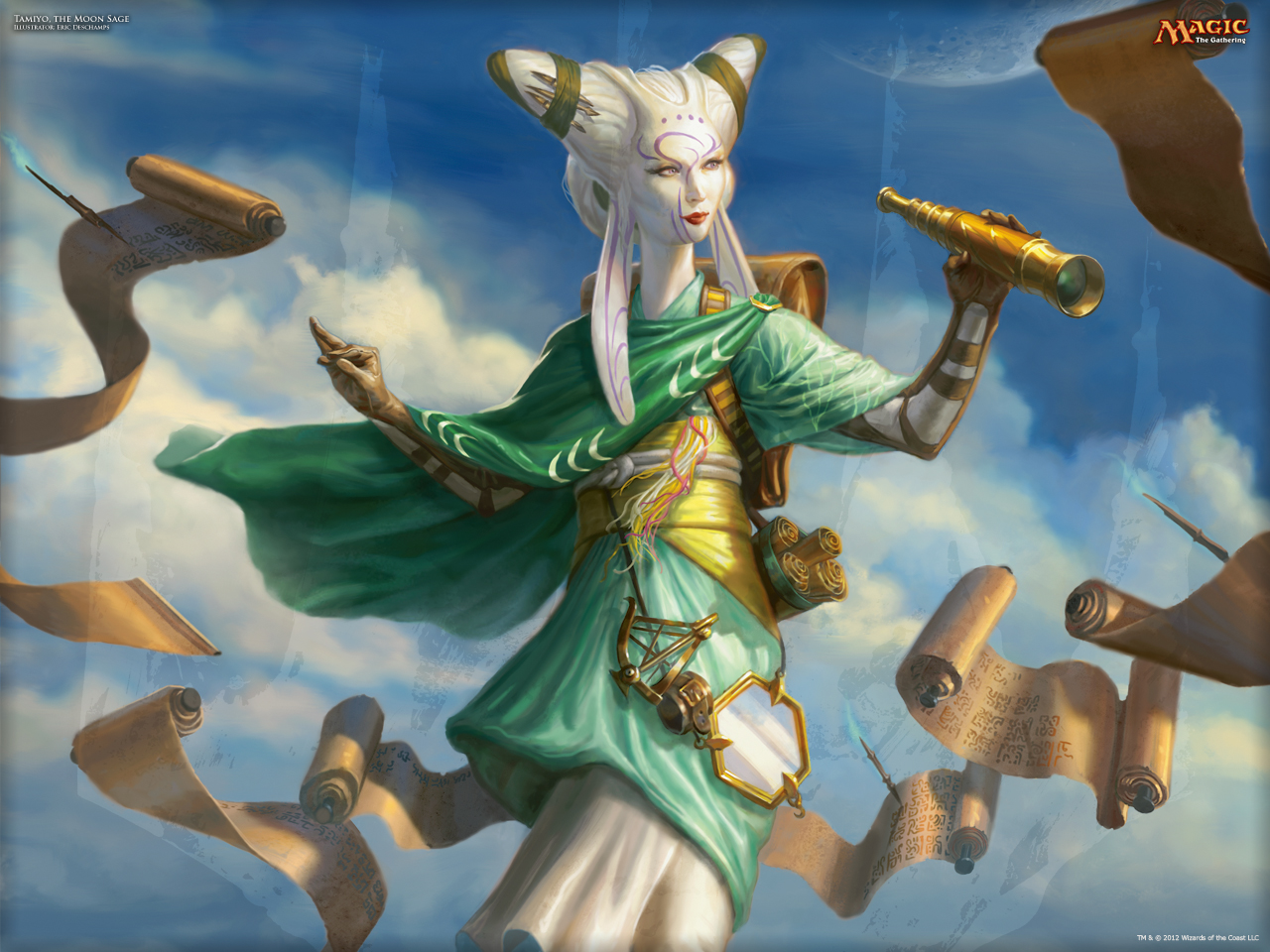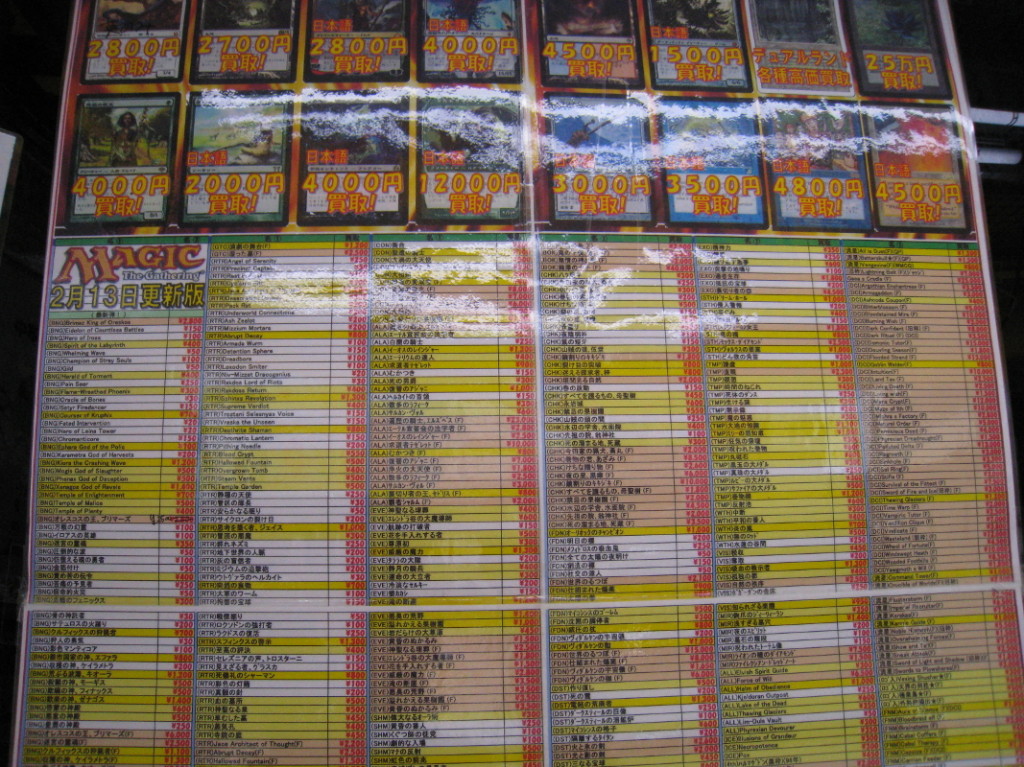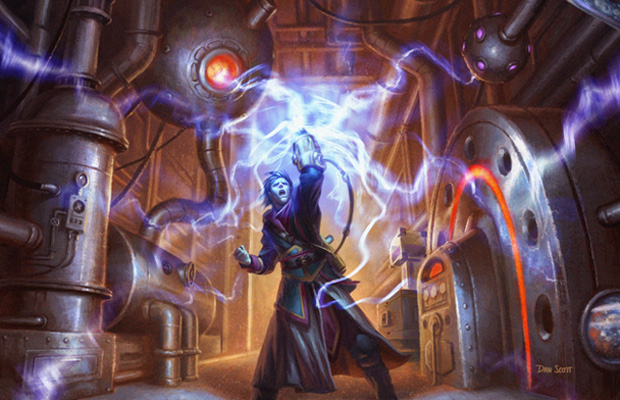By: Travis Allen
I addressed this topic about a year ago on my personal blog, but now feels like an appropriate time to revisit the matter and distribute the idea to more than those poor souls who had the link forced upon them eleven months ago.
GP Richmond was a lot of things to a lot of people. It was the largest constructed event ever. It was the largest event that many players have ever attended, and it was the largest event SCG had ever run. It was the first major Modern tournament many players attended. It was the catalyst that got many players off their butts to finally put together a Modern deck period. It was also a huge, shining beacon for the entire community: Modern is here to stay.
Richmond had a huge impact on Modern card prices, but that’s not what we’re here to discuss today. Rather, we’re here to discuss the impact it will have on Legacy card prices. I’ll sum it up for you.
Legacy is going to die.
Admittedly, it will never actually die die – someone, somewhere, will be playing it. Rather, it’s going to go the way of Vintage, relegated to its own tight-knit, late-20’s, financially secure old guard that spend more time thinking about, discussing, and goldfishing the format than actually playing in sanctioned events. When Wizards announced that the reserved list had not been repealed, but instead solidified, this thin slice of history became axiomatic.
The process will be gradual. The gap between the frequency that Standard/Modern staples and Legacy staples are sold at will widen at the local level. Less people will ask if you have Forces and duals for trade. (This is something that I’ve personally witnessed.) Richmond was the first horseman of the apocalypse, and SCG adding Modern as a major format to their open series will likely be the second. It will begin with just a few events where Modern shows up as a trial to gauge demand. It will be popular. Perhaps following that they’ll switch to a 75/25 split between Legacy and Modern. Maybe they’ll run Modern alongside Legacy on Sunday, creating a division between old eternal players and new eternal players. I’m not sure, and I’m guessing Pete isn’t either. But they certainly aren’t blind to the amazing demand for the new reality.

Think about all of this from a newer player’s perspective. I’m not talking about the guy that started six months ago and still has commons in his trade binder; I’m talking about the guy that joined up during Zendikar or Scars. Someone who came in during Scars block now has about three-and-a-half years worth of cards. They’ve got Birthing Pods and the Fastlands and a Thrun or two and maybe even a few fetches, since they were still Standard-legal (and $10) when they started playing. They just played through Return to Ravnica, so they have a full set of shocks. They did a draft of Modern Masters or two which helped procure a handful of staple uncommons and maybe even a Goyf or Confidant. Sure they don’t have a full Modern list together, but they’ve got a comfortable portion of several decks.
Where does that same player stand in relation to Legacy? He owns zero dual lands. He’s never had cause to own Karakas or Onslaught fetches or really anything on the reserved list at all. There is a far wider financial gap between a playable Modern deck and a playable Legacy deck at this point. And that’s just the cost in dollars. How about availability? Splinter Twin and Arcbound Ravager and Kiki-Jiki and Birthing Pod are in trade binders. Karakas and Counterbalance and City of Traitors are far, far less visible on a trade floor. Even if you find one, the owner is looking for a premium. After all, our junior player has no Legacy staples to trade away. That Jace is going to command an exchange rate.
Beyond the additional financial barrier, where is our budding Legacy enthusiast going to play? The Legacy scene is highly dependent on region, of course. Here in the tropical paradise of Buffalo, there are a whopping ten stores that sell Magic cards and run events. Do you know how many Legacy tournaments there are? One a month. Other areas have none. Sure, maybe you live someplace where they get thirty people weekly. That is awesome for you. But that is the exception to the rule.
As speculators, investors, and players, it is important to keep an eye on the future. It doesn’t necessarily need to start directly influencing our actions quite yet, but we would be remiss to ignore it. What does all of this mean for our Magic portfolios? Well, it means that Legacy staples aren’t really the bastion of stability you want them to be. They’re definitely more reliant than Ral Zarek or Trostani. But they aren’t going to hold all of these numbers forever, and they’ll only get less liquid as time goes on and less new blood enters the market.
First I’ll tell you what’s pretty safe. Tier S grade AAA reserved list cards are going to be pretty bulletproof. Think Dual lands and Gaea’s Cradle. Cards whose prices are predicated on their rarity and collectability will also remain valuable, such as power, Candelabra of Tawnos, and The Tabernacle at Pendrell Vale.
What about the rest of it though? I flipped through the top sixteen of the most recent SCG open and here are a list of cards whose value is propped up in some considerable capacity by Legacy playability:
True-Name Nemesis
Daze
Force of Will
Sylvan Library
Mother of Runes
Swords to Plowshares
Umezawa’s Jitte
Karakas
Stoneforge Mystic
Sensei’s Divining Top
Counterbalance
Natural Order
City of Traitors
Sneak Attack
Show and Tell
Lion’s Eye Diamond
Cabal Therapy
Jace, the Mind Sculptor
Vindicate
Some of those will fare better than others. Force of Will is not on the reserved list and is played in exactly one format. As Legacy wanes, so will it. Stoneforge will hold a bit better, as she’s still excellent in Cube and EDH, and some small handful of pie-in-the-sky dreamers will hold out that she’ll be Modern legal some day. Reserved list cards will be more resilient, but won’t be immune to slow declines. If at some point in the future Legacy is no longer a main event at SCG opens, how many people are really going to want Lion’s Eye Diamond anymore? City of Traitors? Take a look at Llawan and Terravore. This type of behavior will be far more common than the other direction once we cross the tipping point and Legacy begins to contract rather than expand.

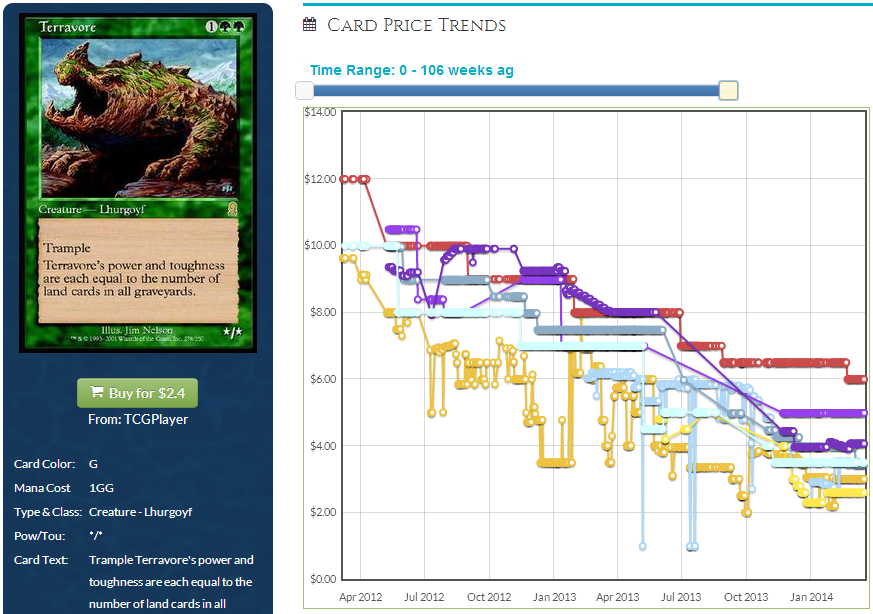
As a Legacy-invested player, what should you do about all of this? I’d start by picking a deck or two that you enjoy playing and making sure you’ve got it together. Then I’d start going through your collection and making sure you aren’t hoarding things unnecessarily. Do you have a pile of Daze or Swords to Plowshares? Into the binder they go. Unlikely to ever play the type of deck that JtMS is in? Maybe you consider putting that up for trade as well. Start considering what you actually foresee yourself using, and more importantly, what you foresee yourself never using.
You don’t need to firesale any of this. The TNN or Karakas can sit quite comfortably in a binder sleeve for over a year without any reasonable offers and that’s just fine. You aren’t looking to get out immediately, because the decline isn’t going to happen immediately. You just want to position yourself to capitalize on solid trades that may not come around again.
Before everything sinks, some prices will jump. There will be more spikes on Legacy cards. This is certain. But it doesn’t hurt to put the goods out there, just to see what types of offers you get. Maybe you’ve got a single Exploration that you’ve had socked away that someone ends up offering you a Karn Liberated for. A single Exploration decaying from the forces of entropy isn’t going to help you, but maybe you really needed that fourth Karn for your Tron list. You can’t get trade offers on cards that you don’t have available to the public.
I will reiterate that this is all long-term perspective. If someone is offering you a True-Name Nemesis for two shocks, take it. Don’t be afraid to make good trades that you can capitalize on in short order. What I wouldn’t do is pick up a City of Traitors just to have it, especially if it means shipping cards you would otherwise actually be playing with in Standard and Modern.
When you’re looking at cards to consider putting in the binder, remember our chat about Bayesian principles. Think probabilistically. What’s more likely, that this Submerge is going to be $20 overnight, or that it will slowly become less tradeable and less valuable?
I especially look forward to feedback this week.
Update – 3/20
I’ve received more comments on this article than any I’ve ever written, and it spawned quite a Reddit thread as well. There seems to be a lot of miscommunication about my message. I realize I haven’t communicated my ideas fully, and for that I apologize. Allow me to expand on the topic and hopefully do a better job making my point.
First, let me be explicitly and absolutely clear – nothing is happening to Legacy anytime soon. It won’t happen in a year. It may not even start within three or four years. This is not an immediate concern. It’s more of a “looking to the horizon” topic. Legacy has enjoyed a growth period of varying degrees for the last few years, just as all of Magic has. That’s also why we’ve seen the card prices rise as they have. I’m not telling you the death of Legacy is going to occur overnight or even within 12-24 months, so please don’t walk away with that message.
I do not want you to run out and sell all of your Legacy cards. There is no need to unload your favorite deck or dual lands this instant. Please don’t trade Underground Seas for Chandra Pyromasters. What I’m suggesting is that you consider looking through your stock and identifying what may be excessive. Definitely keep your set of Force of Wills. Maybe you put your three extra copies in your binder though. Do you have Explorations lying around that you can never see yourself casting? Perhaps instead of resting in your “never sees the light of day” pile at home, slide them into a binder sleeve. They could easily sit there for months at which point you decide you want to use them, and no harm done. Or, perhaps they snag a wandering eye and you pick up something you really wanted for them. Remember that Magic is a commodity market. This True-Name Nemesis is no different than that True-Name Nemesis. Trading away cards now doesn’t mean you can never have them in the future. Just because you take a good deal on your Mox Diamonds today, it doesn’t mean you can never have them back. If you decide in eighteen months that you absolutely need them, there will still be copies in the market for you to acquire.
I am not unaware of the emotional bond people have with this format. I get it. I really do. I play Legacy myself and I enjoy it thoroughly. You can do the most degenerate, wildest, coolest stuff this side of a Mox. People have far more attachment to their Legacy decks than Standard, and for very good reason. It took you far longer to build and cost you way more. I’m not telling you it’s suddenly irrelevant. All I want to do is make you aware that it may not always be the healthy, thriving format it is today. Sometime. Eventually. But not today, and not tomorrow.
Yes, SCG does a lot to support the format. They make money on it. Players play it. It’s popular. But did any of you notice that in 2013 there were multiple SCG events where Legacy wasn’t available? They’re not unaware of these concerns. SCG will milk this cow for all it’s worth, but when attendance dries up too much they’ll drop their buylist prices, sell out of their staples, and shutter Legacy at opens. Think of it like this – SCG can typically only manage to run one major event on Sunday. Do they run Legacy, which attracts 150-300 people, or Modern, which attracts 800?
Llawan and Terravore are not played in Legacy anymore, you are all correct. They were a component of the metagame, and have drifted away. Subsequently, their prices dropped significantly. My point of using these as examples are that these are two cards that were not caught up in the Legacy boom. Cards like Rishadan Port and Wasteland have exploded to keep pace with the current demand of Legacy. Meanwhile, cards that *used* to be part of Legacy have trailed off significantly. It’s easy to say that Llawan simply isn’t part of the metagame anymore, but three years ago she looked like she was an important format role-player. She was trading at $20+. Merfolk was and had been popular and Llawan felt fairly stable. Then the format shifted and Llawan’s usefulness declined. This is the point at which we are interested. If her $20 price tag was somehow inherent and separated from how playable she is in Legacy, she wouldn’t have dropped much. She did drop though, and that tells us something. All of these expensive Legacy cards are supported by their demand from that format. When that demand dries up, so will their prices. It certainly feels like City of Traitors is simply too powerful to not be in Legacy forever, but times change in ways that are difficult to predict. My point with these examples isn’t to show you why or how Legacy will fall out of favor, but to show you what will happen when it does.
This last point is something that I left out of the original post that I should have included. The most important reason that Legacy is not sustainable is the reserved list. I’m not looking to get people all hot and bothered, so let’s not go down that road today. It does have a drastic and severe impact on the format though, making it hard to ignore. Here’s the deal: dual lands are the backbone of the format. Our current supply of dual lands is it. It is the total amount we as a community have and will ever have. It is impossible to add more dual lands to the market. That means only two things can happen: 1. the number available can stay the same or 2. it can decline. Given that Magic cards are flimsy pieces of cardboard, it’s a safe bet that the number will slowly decline. Cards are damaged or lost or forgotten in basements and attics. Slowly but surely, the most essential cards to the format will become harder and harder to find.
Wizards isn’t looking to one-up these either. They’ve had their chance. If they wanted to make Legacy viable, they would have taken what steps they could already. But they didn’t. Instead, they introduced Modern. In Modern, they never have to deal with any of these issues ever again. Yes, some of the card prices are absurd. For right now. They aren’t in a rush to fix things. We think on a scale of months while they think on a scale of years. Yes, people don’t have beloved Modern decks. Yet. I’m guessing most people didn’t have beloved Legacy decks when that first became its own format either. Wizards has chose how our timeline plays out, and we’re all just left living in it.
Don’t think about Magic a year or two from now. Think about Magic five years from now. A decade from now. That’s the Magic I’m thinking of this week.
